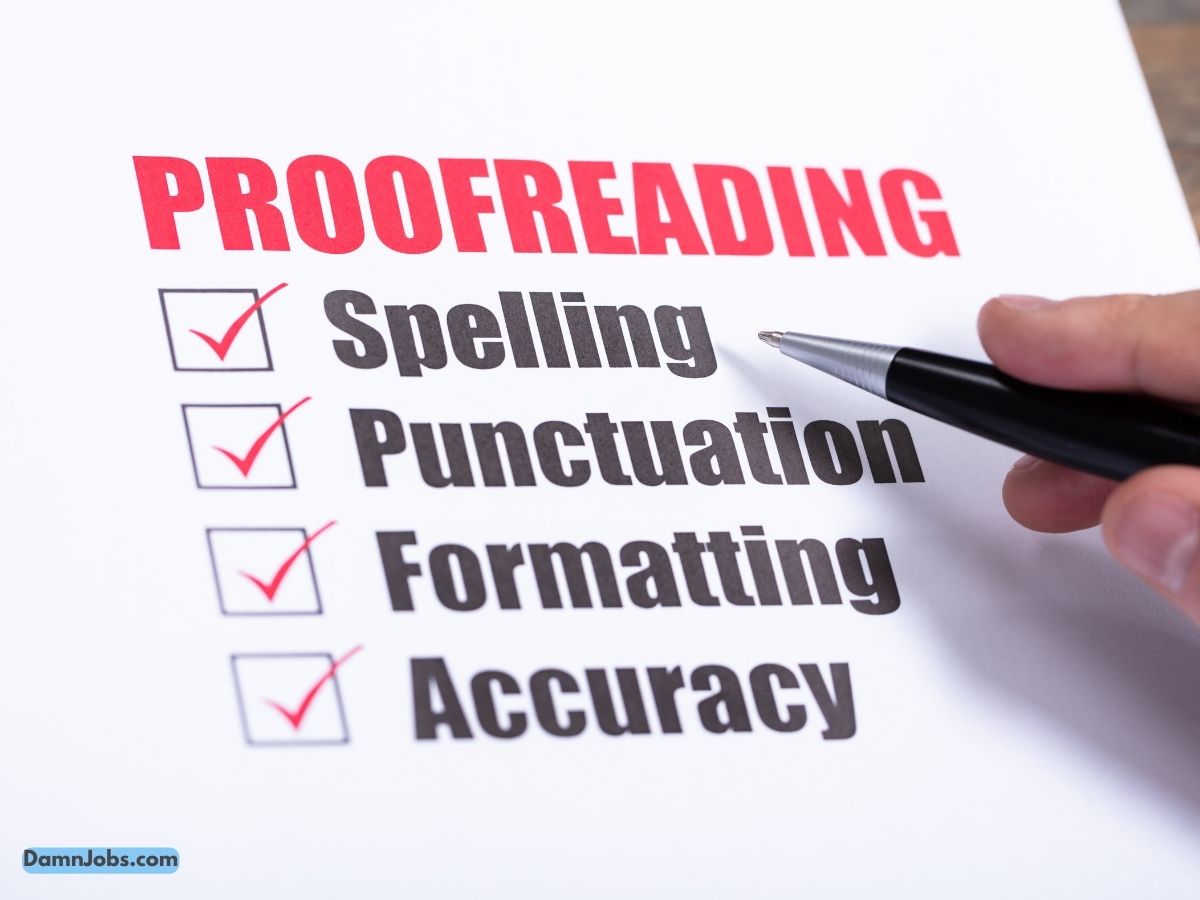The Importance of Proofreading Your Resume
Proofreading your resume is a critical step in the job application process that can make the difference between landing an interview and being passed over.
Your resume is often the first impression potential employers have of you.
Also, a polished, error-free document reflects professionalism, attention to detail, and a serious commitment to the job opportunity.
Here’s why proofreading your resume is so crucial and how to do it effectively.
Why Proofreading Matters
1. First Impressions Count
Your resume is often the first point of contact with a potential employer. A well-proofread resume demonstrates your professionalism and commitment.
Mistakes, on the other hand, can suggest a lack of attention to detail or even a lack of interest in the position.
2. Accuracy Reflects Competence
Errors in your resume can imply that you’re careless or unskilled, even if that’s not the case.
Accurate spelling, grammar, and formatting show that you take pride in your work and have a strong command of the language, which is essential for most roles.
3. Enhances Readability
A resume with errors can be hard to read and understand. Proofreading helps ensure that your document is clear, concise, and easy to navigate.
This makes it easier for hiring managers to see your qualifications and achievements at a glance.
4. Avoids Miscommunication
Typos and grammatical errors can lead to miscommunication about your skills and experiences.
Proofreading ensures that your resume conveys the right message and accurately reflects your qualifications and achievements.
5. Reduces the Risk of Rejection
Many recruiters and hiring managers quickly dismiss resumes with noticeable errors.
A clean, error-free resume increases your chances of making it through initial screenings and catching the eye of hiring decision-makers.
How to Proofread Effectively
1. Take a Break
After drafting your resume, set it aside for a few hours or even a day. Returning to it with fresh eyes will help you spot errors and inconsistencies more easily.
2. Read Aloud
Reading your resume aloud forces you to slow down and process each word individually. This can help you catch mistakes that you might overlook when reading silently.
3. Use Tools and Apps
Leverage spelling and grammar checking tools like Grammarly, Hemingway, or built-in spell checkers in word processing programs.
These tools can catch common errors and suggest improvements.
4. Check for Consistency
Ensure that your resume’s formatting, font sizes, and styles are consistent throughout.
Check that dates, job titles, and company names are correctly spelled and formatted consistently.
5. Review Each Section Separately
Break down the proofreading process by reviewing each section of your resume separately.
Focus on the Professional Summary first, then move on to Experience, Skills, Education, and so on.
6. Get a Second Opinion
Ask a friend, family member, or mentor to review your resume. They can provide an objective perspective and may catch errors that you missed.
7. Check for Common Mistakes
Look out for common resume mistakes such as:
- Spelling Errors: Misspelled words or typos.
- Grammar Issues: Incorrect punctuation, verb tense mismatches, or sentence fragments.
- Formatting Inconsistencies: Uneven spacing, inconsistent fonts, or misaligned text.
- Incorrect Contact Information: Outdated phone numbers, email addresses, or LinkedIn URLs.
8. Verify Facts
Ensure all dates, job titles, and contact information are accurate. Verify that your listed achievements and responsibilities accurately reflect your experience.
9. Ensure Tailoring
If you’ve tailored your resume for a specific job application, double-check that the tailored sections are relevant to the position and free of errors.
10. Print It Out
Sometimes, mistakes are easier to spot on paper than on a screen. Print out your resume to review it in a different format.
Conclusion
Proofreading your resume is not just about catching typos; it’s about presenting yourself in the best possible light.
A meticulously proofread resume demonstrates professionalism, attention to detail, and dedication.
By taking the time to review your resume carefully, you ensure that it effectively communicates your qualifications and leaves a positive impression on potential employers.

